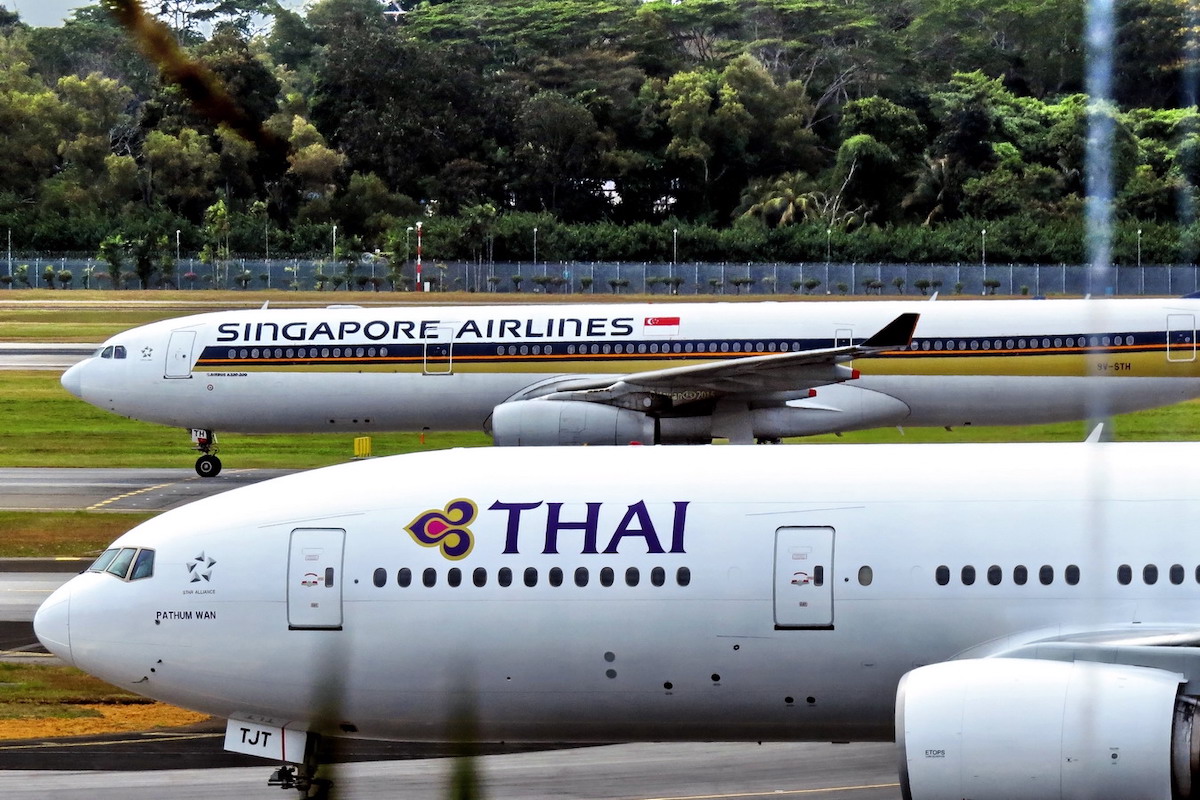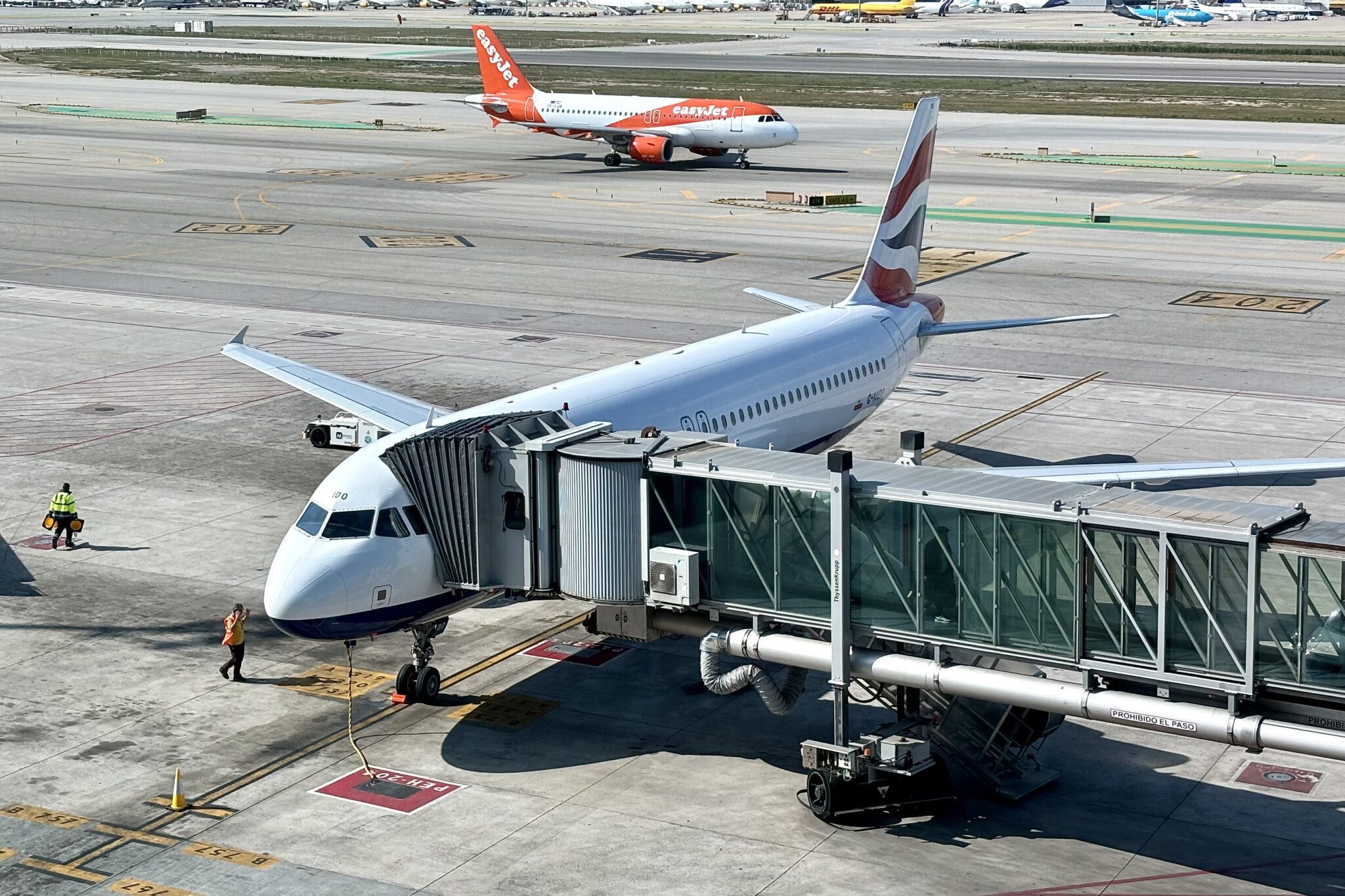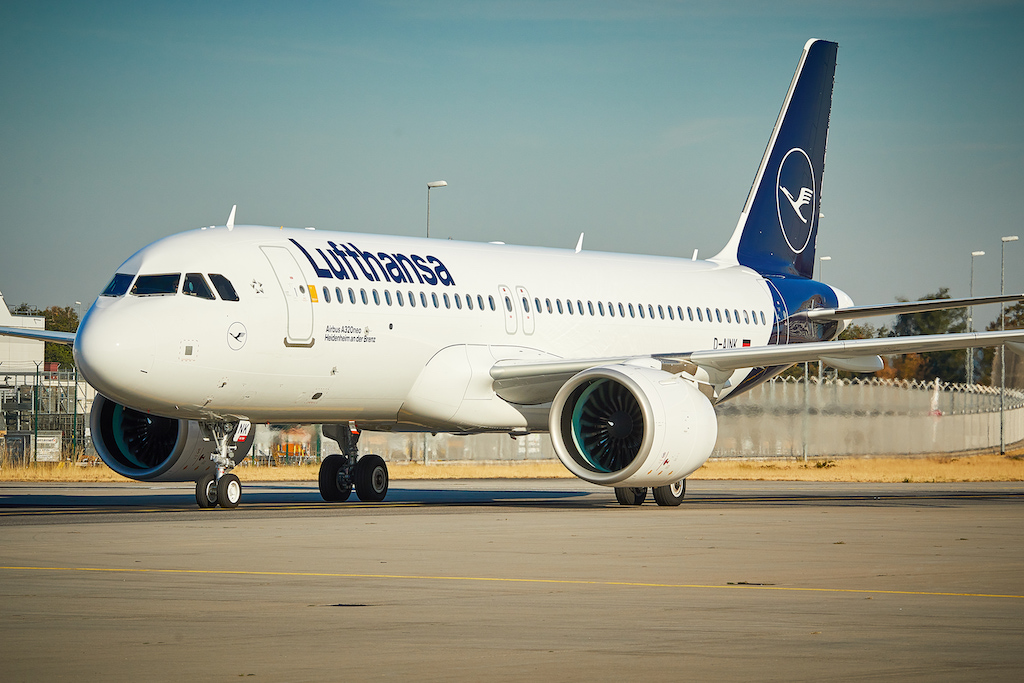Singapore Airlines plans a partnership with its long-troubled neighbor Thai Airways, in a strategic move that comes just days after it revealed plans to take a 25 percent stake in an upsized Air India.
The two airlines, both members of the Star Alliance, plan an extensive codeshare agreement under the pact. The tactic improves the marketability of each other’s flights in global distribution systems. This will begin with flights connecting Singapore and Bangkok and, by the end of the first quarter of 2023, it will expand to select routes between Singapore and North America and South Africa. Routes to India, Europe, and Australasia will likely follow.
The cooperation is unlikely to end there. The carriers also pledged to explore “wide-ranging commercial collaboration,” mentioning areas like loyalty, customer experience, airport lounge access, and airport ground services. There was no mention, however, of exchanging any ownership stakes. Both airlines are controlled by their respective governments, though Singapore Airlines is partially publicly traded. Thai Airways had publicly traded shares as well until filing for bankruptcy during the pandemic. It does not foresee re-listing again until 2025 at the earliest.
Singapore Airlines has long sought partnerships and allies to hedge its heavy exposure to its namesake market. As longtime CEO Goh Choon Phong explained during a discussion of the company’s latest earnings in November: “The reason why we have looked at a multi-hub strategy is because Singapore is a really small market, with five to six million people. We do not have a hinterland of domestic network that many other big countries have, so there are growth limitations based on the Singapore market. We are mitigating some of that, through all kinds of partnerships.”
The approach has not always met with success. Singapore Airlines infamously overpaid for a 49 percent stake in Virgin Atlantic Airways not long before the September 11, 2001, attacks; the stake was eventually sold to Delta Air Lines. Investments in Australia and New Zealand, first with Ansett and later with Virgin Australia, ended badly — both carriers would end up in bankruptcy. A joint low-cost longhaul venture in Thailand, NokScoot, was another failure. Earlier attempts to buy a stake in Air India, as well as a plan to invest in China Eastern Airlines, would have resulted in heavy losses had they happened. Just prior to the pandemic, Singapore Airlines flirted with the possibility of buying a stake in the Korean low-cost carrier Jeju Air.
Singapore Airlines has joint ventures with Lufthansa, SAS, and Air New Zealand, and unveiled plans for one with Japan’s largest airline, All Nippon Airways, in early 2020.
The Singaporean carrier is clearly keen on cooperating with rivals. The latest announcement regarding Thai Airways follows earlier partnership announcements with Malaysia Airlines and Indonesia’s Garuda in Southeast Asia. Last fall, Singapore Airlines expanded its codeshare with United Airlines in the U.S., a market where the carrier is growing aggressively using new ultra-long-range planes. And just last month, it reaffirmed its collaboration with Virgin Australia, now restructured and under new ownership post-bankruptcy. Then came its recent plan to merge its affiliate Visatra with Air India, giving it a 25 percent stake in the combined entity.
Pressure was building at Singapore Airlines, long one of the industry’s profit champions before producing a steady string of mediocre profits during the 2010s. Prior to the 2008-09 global financial crisis, it was a “battleship in a sea of shipwrecks,” as Airline Weekly once called it. But Asia’s airlines would improve, and competition would intensify, from low-cost carriers, Gulf carriers, and others. The pandemic naturally proved difficult in the extreme, not least because of Singapore Airlines’ heavy dependence on intercontinental premium traffic, during a time when the only area of salvation was domestic leisure flying. A large and quickly administered injection of government support, however, forestalled the need for a bankruptcy restructuring of the sort undertaken by Thai Airways. Robust cargo revenues also helped Singapore navigate the Covid crisis.
Now that the crisis is largely past, Singapore is earning some of its best profit margins ever. During the July-to-September quarter, its 15 percent operating margin ranked highly among all airlines tracked by Airline Weekly. This was also fifth best among airlines that operate widebody planes. Cargo continues to be a key contributor in 2022. But more importantly, longhaul premium traffic is back, in some ways stronger than ever — longhaul yields are extremely high. In stark contrast to the heightened competition Singapore Airlines faced throughout the 2010s, competitive capacity is now in retreat.
An example of that: Thai Airways, including its Thai Smile budget operation. Its capacity, according to Diio by Cirium, is down a massive 48 percent this quarter, versus the fourth quarter of 2019. (Singapore Airlines capacity, including Scoot, are down just 17 percent). Thai Airways now needs to reinvent itself as a much smaller carrier. And cooperating with Singapore Airlines provides it a way to retain some of the market reach it has lost by exiting so many markets.
Thai Airways was itself a rock-solid profit generator once, with a decades-long streak of making money hauling tourists to Thailand’s cities and beaches. But low-cost competition from AirAsia, Lion Air, and VietJet made the 2010s a decade of financial misery for the flag carrier, culminating in its bankruptcy filing in 2020. It has since cut roughly half of its workforce while renegotiating aircraft leases and simplifying a notoriously complex fleet. Something seems to be working. Like Singapore Airlines, Thai did well last quarter, earning a 12 percent operating margin.





